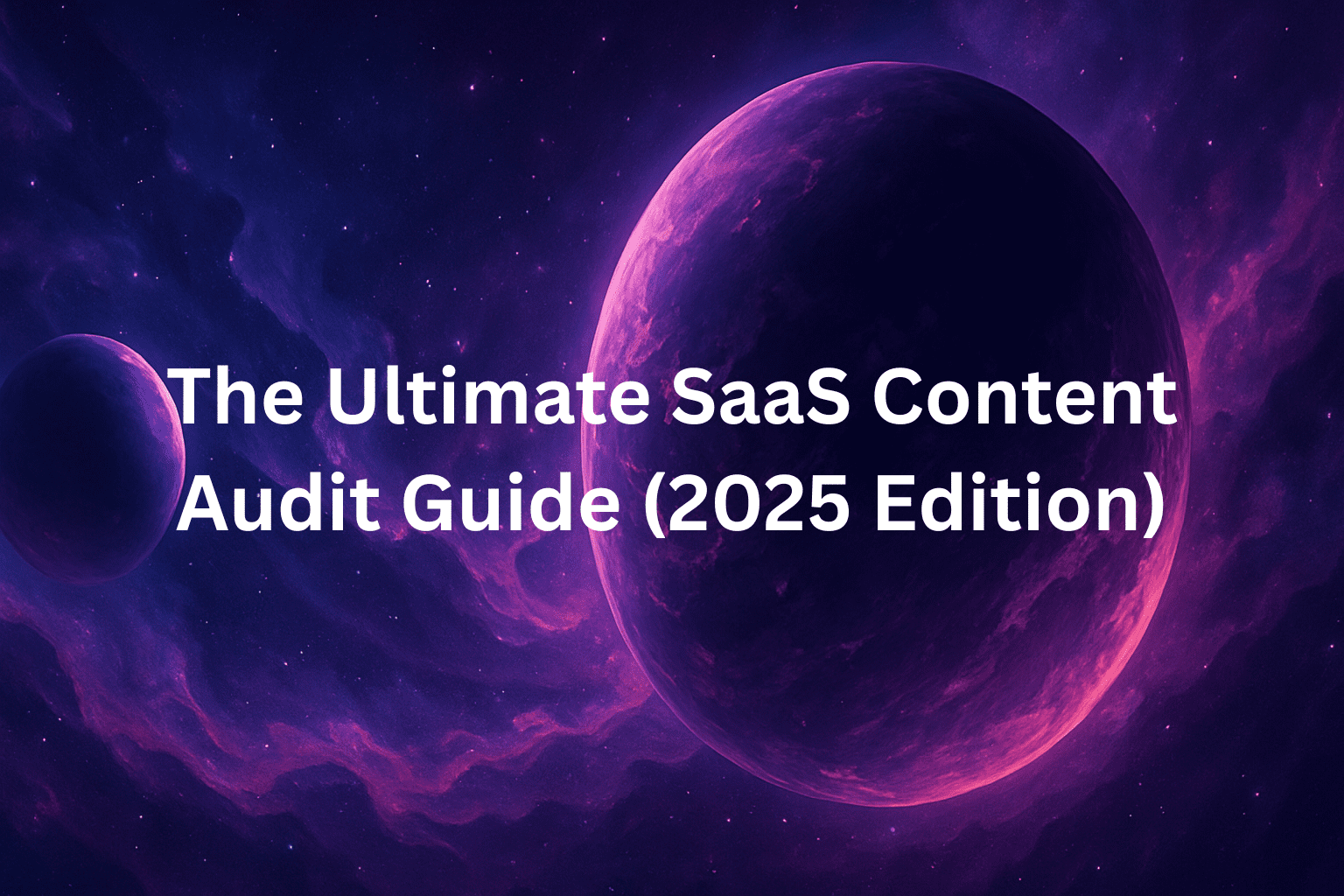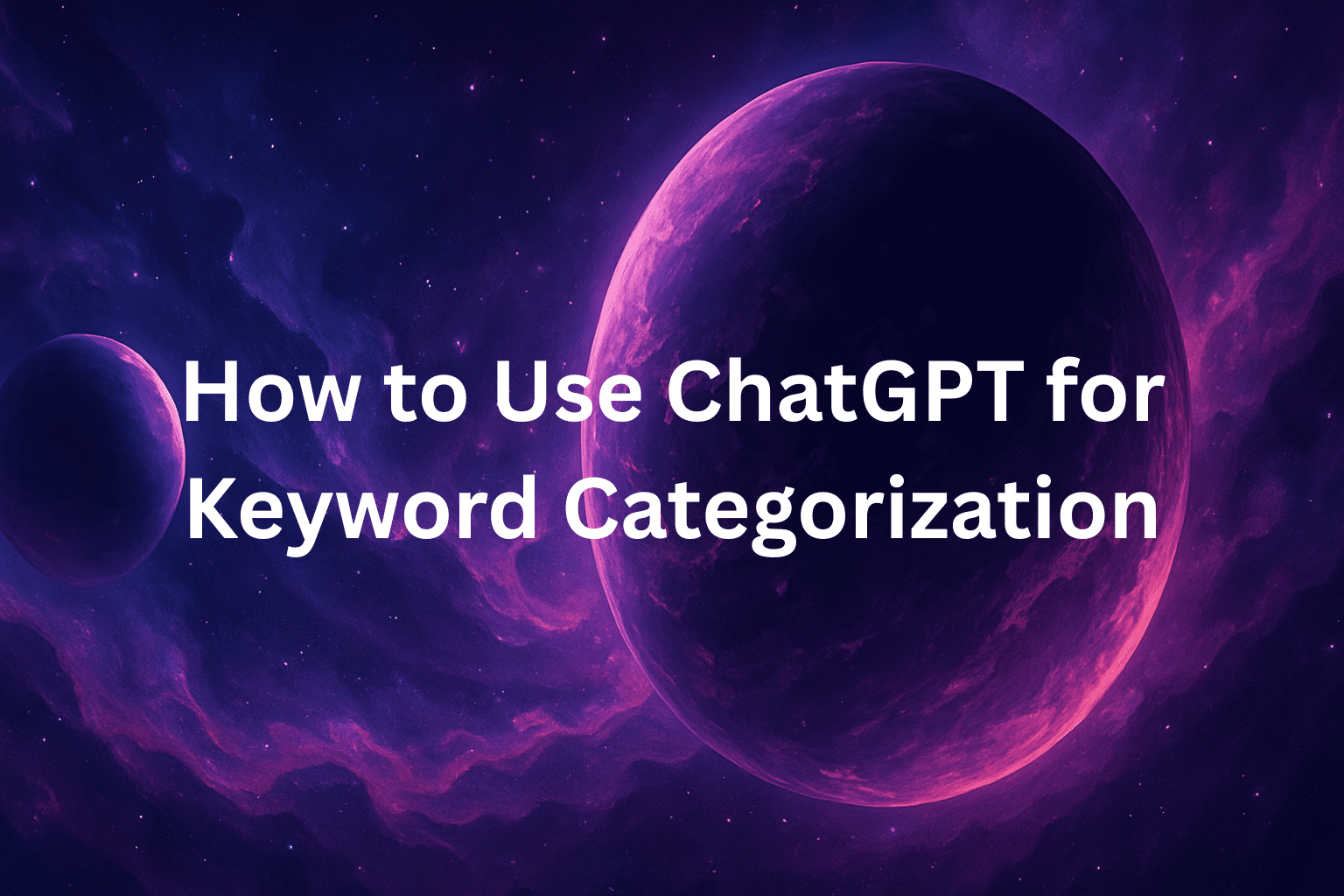/
June 11, 2025
/
rankgeo
The Ultimate SaaS Content Audit Guide (2025 Edition): Boost Rankings with RankGEO

In the fast-paced world of SaaS, content is one of your most valuable growth assets—but only if it’s optimized, aligned with your strategy, and regularly maintained. A SaaS content audit is your opportunity to clean house, identify underperforming assets, and unlock SEO wins across your funnel.
In this 2000-word guide, we’ll walk you through how to run a high-impact SaaS content audit using RankGEO’s AI-powered tools to improve rankings, content quality, and visibility in AI search engines.
Why Every SaaS Company Needs a Content Audit in 2025
Most SaaS companies push content fast—launching blogs, landing pages, feature pages, docs, and gated assets to drive traffic, onboard users, and rank in search. But without regular audits, this leads to:
Content cannibalization
Keyword overlap
Outdated or irrelevant pages
Thin or duplicate content
Missed internal linking opportunities
By auditing your content regularly, you ensure:
Every piece of content has a clear purpose
Pages are optimized for SAO (Search AI Optimization)
Low-quality or underperforming assets are improved, consolidated, or removed
Internal links are up to date and supporting your content hierarchy
A well-run audit can dramatically increase organic visibility, content conversion rates, and reduce the friction your visitors face while exploring your product ecosystem.
What’s Changed: Auditing Content for AI SEO, Not Just Google
In 2025, traditional SEO is no longer the only focus. Users are now searching inside:
ChatGPT
Perplexity AI
Claude
Google’s SGE (Search Generative Experience)
That means your content needs to:
Be structured for summarization
Include factual, verifiable information
Be written clearly with semantic markup
Include answers to long-tail, question-based prompts
This is especially relevant for SaaS, where users are often searching for:
“Best CRM for startups”
“How to integrate Stripe with SaaS checkout”
“Alternatives to HubSpot for small teams”
To show up in these AI-generated snippets and summaries, your content must be well-structured, aligned with user intent, and optimized using SAO principles. RankGEO’s audit tool scores your pages based on how well they perform in these emerging search platforms.
Step-by-Step SaaS Content Audit Process
1. Inventory Your Entire Content Library
Export a full list of URLs from your CMS or use RankGEO’s audit tool to crawl your website.
Group by content type:
Blog posts
Feature pages
Product landing pages
Documentation / help articles
Comparison / alternatives pages
Lead magnets
Categorizing content helps you see overlaps and identify redundant or outdated assets that may be diluting your authority.
2. Collect Key Metrics
RankGEO auto-collects the following for each page:
Organic traffic (GA/GA4)
Keyword rankings (SEMRush/Ahrefs API integration)
Conversion goals
Bounce rate & time on page
Backlinks
Crawl status
Indexation status
Social shares and engagement (optional)
3. Categorize by Performance
Create 4 main buckets:
Keep (high-performing, up-to-date)
Improve (good potential, needs optimization)
Merge (content overlap)
Remove (outdated, irrelevant, or hurting SEO)
Use RankGEO’s heatmaps and comparative scoring to speed up this process. You’ll see instantly which pages are dragging your domain down.
4. Run SEO + SAO Checks
Use RankGEO to scan for:
Missing meta titles and descriptions
Weak or missing H1/H2s
Keyword gaps vs competitors
Internal linking issues
Schema compatibility (FAQ, How-To, Article)
AI search-readiness score (how well a page ranks in ChatGPT-type queries)
5. Action Your Pages
For each content piece, assign clear next steps:
Rewrite with SAO formatting
Add missing keywords
Merge with similar content
Redirect or unpublish
Include a content brief with each rewrite assignment that includes keyword focus, target user intent, and key takeaways.
Key Metrics to Track in SaaS Content Performance
While traffic and rankings are core metrics, SaaS companies should also track:
Sign-ups from content: Track attribution from each blog or landing page.
Feature awareness: Are users landing on pages that showcase new features?
Product-qualified traffic: Measure visitors who meet ICP criteria.
AI SEO visibility: RankGEO shows if your content is indexed and surfaced in ChatGPT or Perplexity.
Content lifespan: How long is your content staying relevant and driving traffic?
Content velocity: How frequently are you publishing and updating? Too much without audits leads to bloat.
These metrics help you quantify the business impact of your content and connect SEO directly to growth goals.
SaaS Content Audit Template
Want a quick-start checklist? Use this framework to audit each content piece:
| Criteria | ✅/❌ | Notes |
|---|---|---|
| Page is indexed in Google | ||
| Meta title + H1 contain keyword | ||
| Top 10 keyword opportunities | ||
| Internal links added | ||
| Outdated screenshots/info | ||
| Conversion tracked (goal set) | ||
| Featured snippet / FAQ markup | ||
| Answers relevant ChatGPT prompt | ||
| Alt text for images | ||
| Last updated in past 12 months |
How to Automate Content Audits with RankGEO
Manual audits are time-consuming. RankGEO cuts the process down to minutes:
URL import from CMS or sitemap
Auto-metrics tracking with real-time SEO + SAO data
AI-powered recommendations for each URL
Team dashboard for assigning updates and tracking status
Other platforms focus on basic SEO. RankGEO is built for the future of search—where ranking in AI-driven engines is just as important as Google.
You can integrate it with your publishing workflow, assign tasks to writers and SEOs, and monitor performance over time with our reporting suite.
Common Mistakes in SaaS Content Audits and How to Avoid Them
Only looking at traffic: Low-traffic pages may still drive high-value leads.
Ignoring AI search performance: Your blog might rank in Google, but get ignored by ChatGPT.
One-time audits: You should audit quarterly or after major product/feature launches.
Not measuring outcomes: Tie audits to business goals—signups, retention, lead gen.
Over-optimizing: Avoid stuffing keywords or removing helpful content just to streamline.
No centralized system: Without a unified view, teams work in silos and audits lose value.
Use RankGEO’s collaborative dashboard to keep your entire content and SEO team aligned.
Ready to Audit Your Content? Join RankGEO’s Waitlist
If your SaaS website has more than 20 pages, you’re likely leaving traffic—and leads—on the table.
Join the waitlist for RankGEO’s SaaS content audit tool and:
Find and fix your biggest SEO content gaps
Optimize for AI search engines
Automate future audits with ease
RankGEO is where modern SaaS teams go to win in search.


